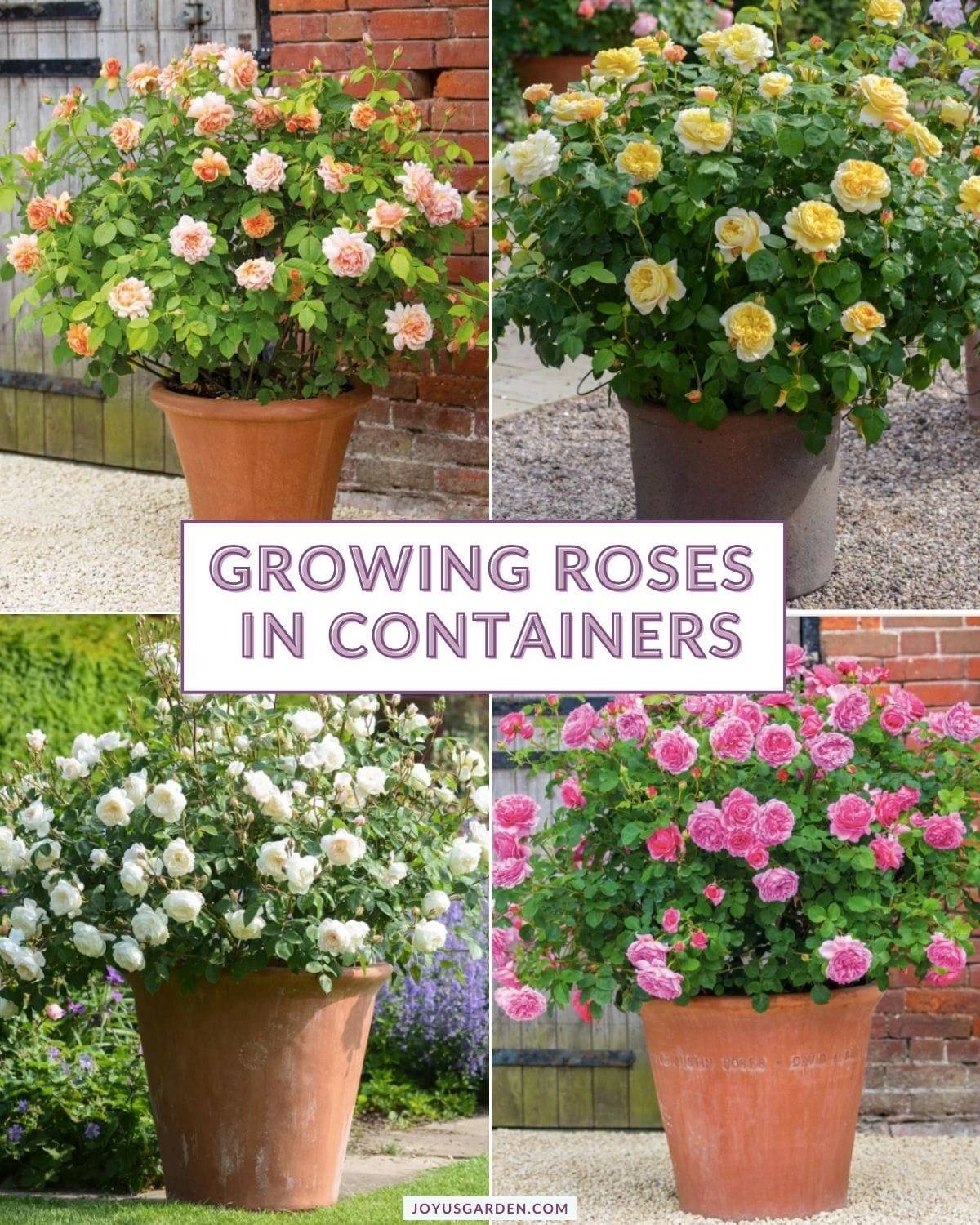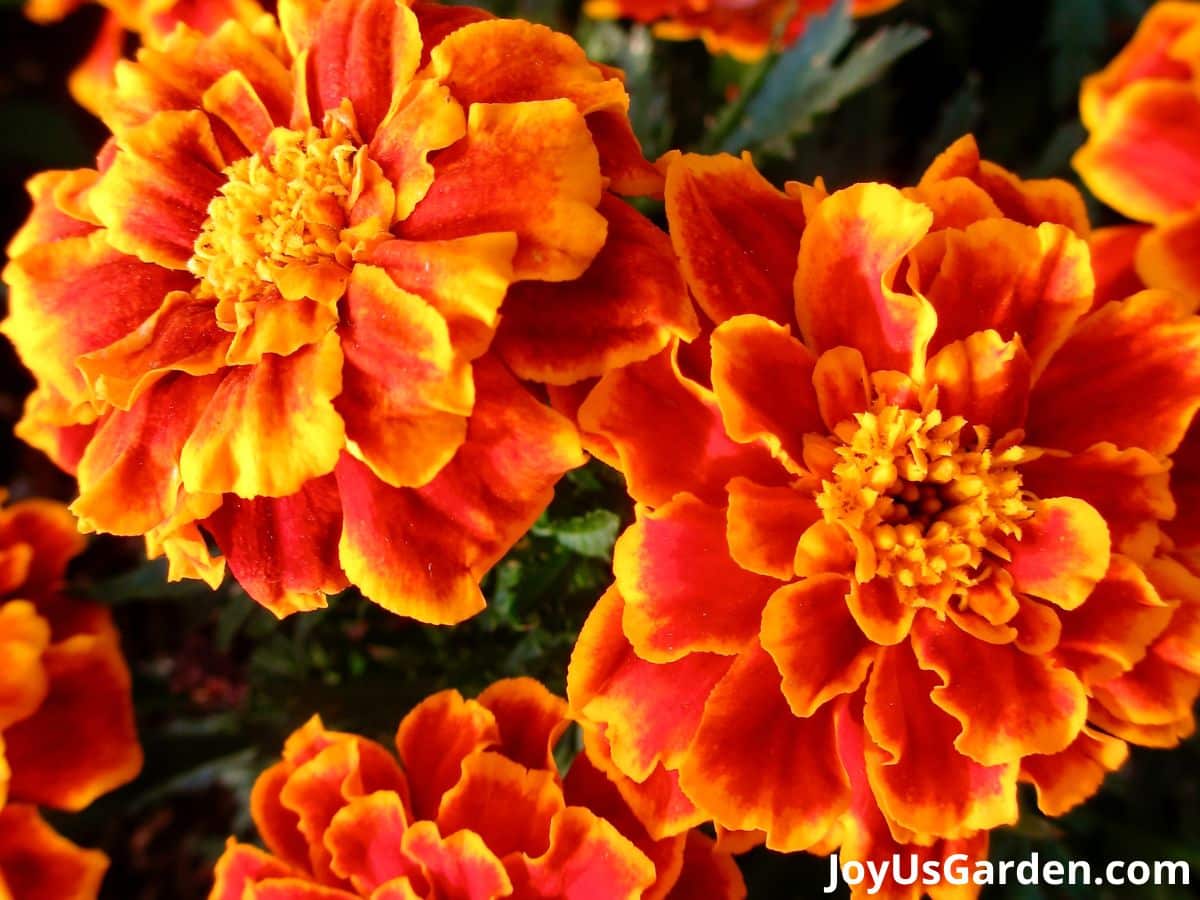
Roses are famed for his or her classically elegant look and their outsized blooms that usually exude a wealthy and heady perfume. Most gardeners develop roses in inground gardens, utilizing smaller rose varieties as pure borders for flower beds and bigger roses as assertion vegetation in rose gardens. However in case you don’t have a lot room in your yard for roses otherwise you merely need to take pleasure in lovely roses in your patio, porch, or balcony, you might need to attempt rising roses in containers as a substitute!
Not solely do container roses provide you with extra planting choices, however conserving potted roses can scale back plant pests and will let you develop your favourite rose flowers in gardens with poor or rocky soils. Uncover what sorts of roses develop properly in pots, the most effective pots to make use of, and different ideas on this beginner-friendly information on conserving container-grown roses.
Rising Roses In Containers

Selecting Roses
Choosing the right roses for container gardens is essential if you wish to preserve wholesome vegetation with out a lot effort. Climbing and enormous roses are usually too demanding for container gardens, whereas miniature roses, groundcover roses, tree roses, and patio roses are a number of the greatest picks for small areas.
You may typically develop small shrub roses and well-liked rose varieties like English roses and hybrid tea roses in containers too – simply you’ll want to select giant pots to accommodate their roots.
Except for plant measurement, it’s additionally essential to contemplate rose shade, perfume, and different elements that make roses interesting. Reblooming roses and disease-resistant vegetation may be particularly straightforward and rewarding to maintain.
33 of our favourite roses for containers are showcased right here and listed by shade. Blissful shopping!
Selecting Containers For Roses
If you wish to use potted roses as a focus on patios and porches, colourful ceramic containers and concrete planters may be significantly interesting. Nonetheless, roses will also be stored in planters fabricated from terra cotta, plastic, wooden, or stone, so long as they’ve loads of drainage holes to forestall soggy roots. If in case you have a planter with a stable base that you simply love, think about drilling some drainage holes with an influence drill and masonry drill bit to maintain your roses joyful.
Since roses have deep roots, it’s greatest to make use of tall planters that present loads of room for his or her roots to develop. Miniature sorts of roses can often slot in window containers or a 2 to three gallon pot, whereas drift roses will thrive in a 3 to five gallon container, and bigger vegetation like ‘Knock Out’ roses will do greatest in 10 to fifteen gallon planters. Selecting bigger pots with wheels or including a wheeled base beneath planters could make it simpler to maneuver bigger containers round as wanted.
Soil & Amendments For Rose Container Gardening
Roses are heavy feeders underneath any circumstance, however their nutrient wants are even increased in container gardens. Whereas backyard vegetation can hunt down vitamins deep within the soil with their roots, potted roses are solely depending on the vitamins we give them. So, it’s much more essential to stay to a daily schedule when fertilizing container vegetation!
If you first plant roses in pots, avoid granular fertilizers and potting mixes with added fertilizer. These merchandise can construct up in container gardens, and burn rose roots. As a substitute, amend potting mixes with compost or well-rotted manure earlier than planting, after which fertilize your roses roughly as soon as each 4 to six weeks all through the rising season with an natural liquid fertilizer, like fish emulsion.
Right here’s data on easy methods to feed your roses organically & naturally.

Correct Planting Methods
If you’re able to plant, rigorously take away your roses from their nursery containers and gently tease aside their roots to encourage wholesome root growth. If you happen to’re rising naked root roses, soak the roots in water for a number of hours earlier than planting.
Partially fill your planting container with a wealthy and well-draining potting combine amended with compost or aged manure. Mounding up a little bit of soil within the heart of your pot may help help naked root roses and make them simpler to plant. Be certain that the highest of the rose root ball is an inch or two beneath the pot’s rim, fan out the rose roots across the pot as wanted, after which backfill the pot with soil in order that the highest of the soil stage is even with the foundation ball of the plant.
Add a two-inch layer of pure bark mulch over the soil floor to forestall weeds and insulate the soil so it doesn’t dry out too shortly. Then, water your new rose vegetation deeply and transfer them right into a location the place they’ll obtain six or extra hours of solar per day.
Care and Upkeep
After planting, roses will want a correct stability of sunshine, fertilizer, and water to develop. Keep in mind, roses want at the very least 6 to eight hours of full solar every day, so you’ll want to find your vegetation in a sunny spot!
Watering schedules can fluctuate all year long relying on temperature and climate patterns; nevertheless, normally, roses want about 1” of water per week. Potted vegetation might have every day watering in sizzling climates, and vegetation will likely be more healthy in case you water them within the morning and direct your hose on the soil line to maintain plant leaves dry. If you happen to’re undecided if it’s time to water, really feel the soil and water when the highest 1 to 2” of soil feels dry.
Watering on the soil line may help forestall illnesses like black spot and powdery mildew, however you can even preserve these issues at bay by pruning away diseased and broken foliage as quickly as potential. Pruning early within the season will also be used to form potted roses and deadheading spent blooms will enhance flowering.
When you’re pruning, test your vegetation for pests like sawflies, aphids, and spider mites, which may be handled with a powerful blast out of your backyard hose and functions of natural insecticidal cleaning soap spray.
When fertilizing roses, natural liquid fertilizers are often the only option as they’re much less prone to burn delicate plant roots. Apply fertilizers roughly as soon as each 4 to six weeks for greatest outcomes. And don’t neglect to repot your vegetation each 2 to three years to refresh the soil and provides vegetation extra room to develop.
Listed below are 23 of the greatest flowers for pots that bloom all summer time. Roses are on this record!
Winter Safety
Most roses are comparatively hardy when planted in backyard beds. Nonetheless, as a result of their roots are extra uncovered, container-grown roses often want additional winter safety to outlive the winter months.
If you happen to reside in a light local weather, mulching over your plant’s roots could also be all that’s wanted. Nonetheless, in areas with chilly winters, you might need to transfer potted roses indoors or into greenhouses earlier than winter arrives. If you happen to go this route, test your vegetation over rigorously to make sure they aren’t harboring pests!
Alternatively, you’ll be able to preserve potted roses open air till they drop their leaves after which convey them right into a protected location, like an unheated storage, the place they’ll keep cool however not freeze. Merely water the vegetation sparingly about as soon as a month to maintain them from drying out, and transfer them again outdoors when spring arrives.
For a fair decrease upkeep choice, preserve potted roses open air through the winter however bury their pots in soil for additional insulation. Since soils are often fairly free in veggie gardens, you’ll be able to bury rose pots in your vegetable beds and add mulch across the roots for added insulation. When temperatures heat in spring, merely dig up your potted roses and take care of them as ordinary!
Companion Planting
Companion planting is often used on edible crops to spice up plant progress and repel pests. Nonetheless, this pure gardening method will also be used on roses to manage pests like aphids, sawflies, and spider mites.
Chives and different alliums are significantly good plant companions for roses since they repel an assortment of pests, together with nematodes and Japanese beetles.
Flowering herbs and vegetation like yarrow, marigolds, and larkspur are additionally unbelievable companion vegetation that may distract pests away from rose blooms and appeal to helpful bugs, like parasitic wasps and hoverflies, that may management backyard pests for you!

Roses love numerous daylight. If you happen to’re on the lookout for annuals to plant seasonally with roses, try these 28 flowers for full solar.
Widespread Points With Roses
Except for aphids, spider mites, and different plant pests, roses can sometimes develop different points like powdery mildew and leaf spot. These fungal illnesses can spoil the look and well being of rose vegetation, however they’ll typically be prevented with correct plant spacing, pruning, and common watering.
Overwatering roses may also produce issues, like drooping or wilted stems, yellow or brown leaves, and root rot. In case your vegetation exhibit these indicators and their soil feels soggy, scale back watering and think about repotting them to refresh the soil.
If roses cease blooming, it might be time to repot your roses as properly. In spite of everything, container-grown roses do greatest after they’re repotted each 2 to three years. Nonetheless, in case your plant’s leaves additionally show seen veining, they might be nutrient poor, which may be fastened with the suitable fertilizer.
Harvesting
When you might merely take pleasure in rising roses as decorative vegetation, you can even develop potted roses for minimize flowers and make your personal home made rose bouquets!
For minimize roses that final, harvest roses within the early morning when the flowers are nonetheless within the bud stage and their petals are simply starting to unfurl. Ideally, minimize flowers ought to have at the very least 12” lengthy stems, however stems from potted or miniature vegetation could also be shorter. Lower stems at a slight angle with sterilized pruners simply above a leaf node, take away the decrease leaves, and place your minimize flowers in water as quickly as potential to forestall wilting.
Conclusion: Rising roses in containers has many perks, however it’s additionally the most effective methods to broaden your rising area and spruce up drab patios and porches with extra of your favourite vegetation. After you have your roses potted up simply the way in which you want, use them to intensify backyard walkways or place them round your deck for an additional pop of shade.
With their daring magnificence and shiny colours, roses by no means exit of fashion, and potted vegetation will look proper at house nearly anyplace!
Blissful Gardening,
-Lauren
Lauren Landers is a Grasp Gardener and gardeing author livig in Maine. After working a small natural farm in New England for a number of years, Lauren transitioned to freelance writing and loves serving to others uncover the great thing about natural and pollinator gardening!
